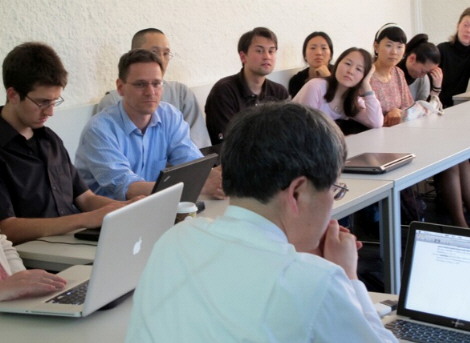Prof. Seishi Karashima: “On Avalokitasvara and Avalokiteśvara”
9 May 2012

Photo: Orna Almogi
The name of the popular Mahāyāna Bodhisattva, Avalokiteśvara, appears as Avalokitasvara (One Who Surveys Sound?) in the older Sanskrit fragments of the Saddharmapuṇḍarīkasūtra from Central Asia, dating probably to the 5 th or 6 th century. In the corresponding portions of the Gilgit manuscripts, dating probably to the 7 th century, the so-called “Kashagar” manuscript (actually from Khotan), dating probably to the 8 th century and the Nepalese manuscripts, dating from the 11 th century onwards, we find the form Avalokiteśvara instead. When we turn to the Chinese translations of this Bodhisattva’s name, we can, in fact, trace the change from Avalokitasvara to Avalokiteśvara.
I shall examine the history of the interpretations of this Bodhisattva’s name and attempt to find its original meaning. I shall also introduce my own interpretation of the famous inscription on the relief of a Gandhāran sculpture, at present in the collection of the John and Mable Ringling Museum of Art in Sarasota, Florida, namely my response to the question whether the names Amitābha and Avalokiteśvara are referred to in this inscription or not.
May 9th, 2012 - 16.00h
Universität Hamburg, ESA O
Edmund-Siemers-Allee 1, Raum 209
Free Entrance.

